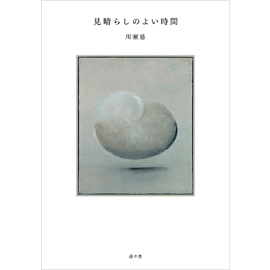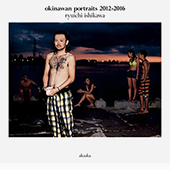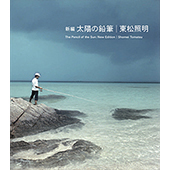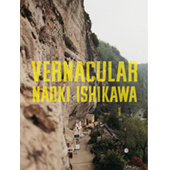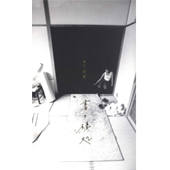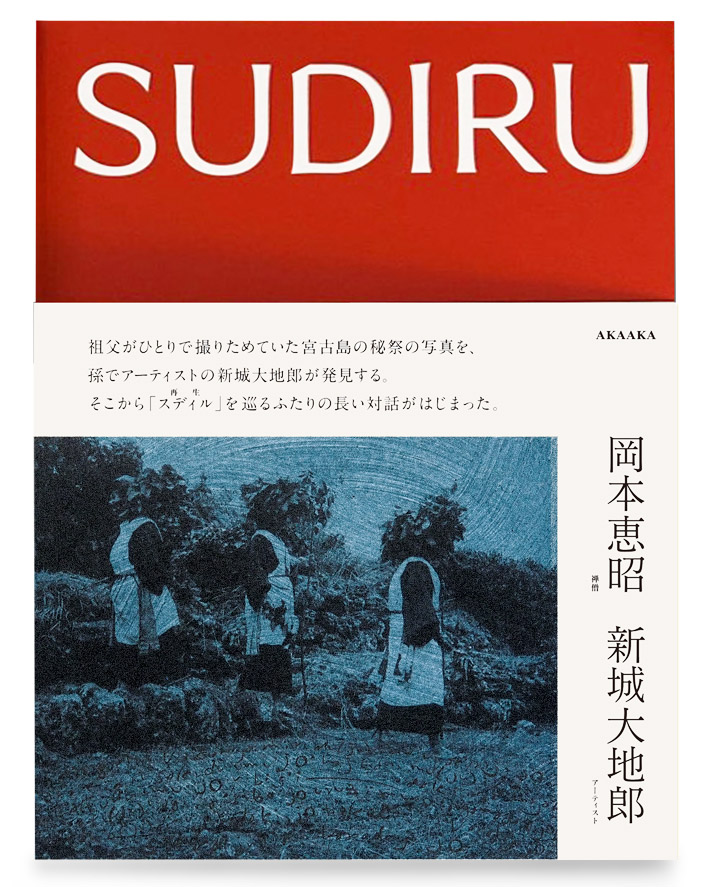
岡本恵昭・新城大地郎『SUDIRU』
Book Design:前田晃伸 髙橋ゆう
発行:赤々舎 Size:H297mm x W228mm Page:152 pages Binding:Hardcover Published in March 2025 ISBN:978-4-86541-195-9 |
¥ 6,500+tax
国内送料無料! お支払い方法は、PayPal、PayPay、Paidy 銀行振込、郵便振替、クレジットカード支払いよりお選び頂けます。 |
|---|
About Book
祖父がひとりで撮りためていた宮古島の秘祭の写真を、孫でアーティストの新城大地郎が発見する。
そこから「 スディル 」を巡るふたりの長い対話がはじまった。
Contents
|
1 大学ノートに貼られた76x112mmの記録 12 はじめに 新城大地郎 18 狩俣 38 島尻 46 池間島 52 西原 56 来間島 62 砂川 72 文化と営み 89 音と文字の記録 97 クロスミャーク 新城大地郎 105 南島の禅僧侶が見てきた信仰 祖父と孫の対談 116 「地方学 (じかたがく)」 としての岡本民俗学 124 記録の強度 128 宮古島の地図 132 写真キャプション 134 新城大地郎作品リスト 135 著者経歴 137 スディル 新城大地郎 |
1 76 x 112 Millimeters Photographs Pasted on Ruled Notebooks 12 Introduction Daichiro Shinjo 18 Karimata 38 Shimajiri 46 Ikema Island 52 Nishihara 56 Kurima Island 62 Uruka 72 Culture and Activities 89 Preserving Sound and Text 97 Cross Myahk Daichiro Shinjo 105 Faith as Seen by a Zen Priest from the Southern Island: 116 Okamoto's Approach to the Study of Folklore as Local Studies 124 The Power of the Photograph Record 128 Map of Miyako Island 132 Photo Captions 134 List of Daichiro Shinjo's Works 135 Biographies 137 Sudiru Daichiro Shinjo |
SUDIRU
Keisho Okamoto, Daichiro Shinjo
Keisho Okamoto (1937-2024) was a Zen monk deeply rooted in Miyako Island and one of the earliest folklorists to undertake the study of Okinawan folklore. Beginning in the latter half of the 1960s, before the reversion of Okinawa to Japan, he conducted extensive fieldwork primarily in the village of Karimata, delving into the folk culture of the region under the influence of leading Japanese scholars such as Kunio Yanagita, Shinobu Orikuchi, and Kitaro Nishida.
This book compiles photographs taken by Okamoto between the late 1960s and late 1970s as part of his practice of folklore as local studies. His lens captured the rituals and ceremonies of Karimata, Shimajiri, Ikema Island, Nishihara, Kurima Island, and Sunagawa. What emerges from these images transcends their role as research materials: they are unembellished portrayals of people expressing gratitude to the gods and to nature, deeply immersed in prayer. As Okamoto was not a professional photographer, his images project a reality free from artistic manipulation, offering a raw and intimate perspective on these sacred moments.
The book also presents works by Daichiro Arashiro, who overlays Okamoto's photographs with layers of indigo and ink, layering the present over the past to create a space for rebirth. Following Okamoto's passing, his invaluable academic materials--including photographs, notebooks, audio recordings, and artifacts--were continuously preserved by his grandson, Arashiro. The past recorded by Okamoto intersects with the present lived by Arashiro, resurrecting the photographs into the contemporary world and forging a dialogue across time. Furthermore, the academic perspective titled "Okamoto's Approach to the Study of Folklore" by folklorist Takanori Shimamura and the contribution by photographer Naoki Ishikawa add depth to this exploration of cultural continuity and transformation.
The title, "Sudiru," is a word from the Miyako language meaning "rebirth" or "resurrection." Through the dialogue between Keisho Okamoto and Daichiro Arashiro, this book invites us to reflect on our roots and poses questions to a world where diverse cultures and values intersect, offering a new perspective on the present.
"Folkloric turning. This is precisely what Shinjo is attempting with this book. Okamoto's folklore studies acquire an entirely new form of expression through their connection and fusion with the works of contemporary calligrapher Daichiro Shinjo."
Takanori Shimamura
"Just as Atget's photographs were discovered by Berenice Abbott and the value of Tsuneichi Miyamoto's photographs was reappraised by Daido Moriyama, Keisho Okamoto's photographs stand tall as a monument to the photographic record and memory due to the efforts of his grandson, Daichiro Shinjo. It gives me great pleasure that the photographs of Keisho Okamoto, which touched my heart five years ago, have stood the test of time and will be released in the form of a photobook."
Naoki Ishikawa
"Originally, the photographs were not supposed to be made public. But from the instant my grandfather pressed the shutter, through the long and involved process that culminated in their presentation in this expressive form in our time, there is great significance. As I confront these images, the sense of glimpsing my own "roots" fills me with energy and vitality. It seems as if a single thread for expressing the present moment is strongly tied to each of the photographs. Mysticism, curiosities, rarity-these are of no importance. As I continue to engage with the foundation of my being, it seems that I am tracing a path back to my umbilical cord that gives me a sensation of subdued excitement within my heart.What appear in the photographs are not artificial performances but simply the authentic and unpretentious appearances of people who are naturally expressing gratitude to the gods and to nature."
Daichiro Shinjo
Artist Information
岡本恵昭
1938年、沖縄県宮古島生まれ。1611年に開山された臨済宗妙心寺派龍寶山祥雲寺の住職を務める傍ら、1972年の沖縄本土復帰以前から宮古島を拠点に宮古島民俗学の研究を続けてきた。島内各集落の祭祀儀礼を中心に、シャーマニズムを禅僧侶の視点から考察し、宮古島の民間信仰と村落祭祀にみる精神文化を探究。また、村落に眠る化石や民具、祥雲寺に残る宝物や資料を収集し、宮古島市総合博物館や沖縄県立博物館へ多数寄贈し、貴重な資料として現在も収蔵・展示されている。
旧平良市の史編纂委員や文化財保護審議委員、博物館競技委員を務め、宮古島市総合博物館の開館にも尽力した。宮古島出身の宗教者としての視点から、民俗・信仰・慣習・風土を幅広く研究し、宮古島の民俗学の発展に貢献した。代表著書に『宮古島の信仰と祭祀』(第一書房)がある。
1961年 花園大学禅哲学科卒業
1965年 臨済宗妙心寺派龍寳山祥雲寺住職就任
2011年 著書 「宮古島の信仰と祭祀」発刊 (第一書房)
2019年 展覧会「KEISHO MYAHK 196X-2021 Photo Exhibition」Gallery UESUYA
2022年 展覧会「SUDERU」PALI GALLERY
2024年 遷化 (享年 87)
新城大地郎
1992年、沖縄県宮古島生まれ。静岡文化芸術大学卒。禅僧で民俗学者の岡本恵昭を祖父に持ち、幼少期より禅や仏教文化に親しみながら書道を始める。禅のほか沖縄の精神文化を背景にして、伝統書道に新たな光を当てる自由なスタイルを追求。身体性と空間性を伴う現代的な表現で、形式にとらわれない書を展開している。
2017年、Playmountain Tokyoで初個展「Surprise」を開催。その後、ロサンゼルスのALTA Gallery(2023年)など国内外で展示を行う。2021年にtricot COMME des GARÇONS、2024年にTAOのコレクションに作品が起用され、2021年にはエルメス制作のドキュメンタリーフィルム「HUMAN ODYSSEY」に出演。2022年には、地元宮古島に「PALI GALLERY」をオープンさせた。
2014年 静岡文化芸術大学卒業
2017年 個展「Surprise」Playmountain Tokyo
2022年 PALI GALLERYを開く
2023年 海外初個展「Black Wax」ALTA Gallery , Los Angeles
2024 年 金沢21世紀美術館 「すべてのものとダンスを踊って―共感のエコロジー」展に出展
Keisho Okamoto
Keisho Okamoto (b. 1938) served as head priest of Ryuhozan Shoun-ji, a temple of the Myoshin-ji school of Rinzai Zen Buddhism, founded on Miyako Island in 1611. Alongside his temple duties, Okamoto was also a tireless folklorist who conducted research on the indigenous folkways of Miyako Island before Okinawa's reversion in 1972. Okamoto was a keen observer of shamanism on Miyako Island, drawing on his perspective as a Zen monk to explore the island's spiritual culture as seen in its folk beliefs and myriad village rituals. He worked to preserve fossils and folk tools gathered around the island, along with artifacts that had survived at Shoun-ji temple. Much of his collection was donated to the Miyakojima City Museum and the Okinawa Prefectural Museum, where these precious materials can be seen today. Okamoto was involved in the creation of the Miyakojima City Museum as a member of the Hirara City (present-day Miyakojima City) museum council, the committee for the protection of cultural properties, and the historiography committee. As both a religious scholar and native son of Miyako Island,
Okamoto's extensive firsthand research into the local beliefs, customs, and terroir was instrumental in furthering an understanding of the island's folklore. His books include Beliefs and Rituals of Miyako Island, published by Dai-ichi Shobo.
1961 Graduated from Hanazono University, Department of Zen Philosophy
1965 Named head priest of Shoun-ji Temple
2011 Beliefs and Rituals of Miyako Island published by Dai-ichi Shobo
2019 KEISHO MYAHK 196X photo exhibition held at Gallery UESUYA
2022 SUDERU exhibition held at PALI Gallery
2024 Died at age 87
Daichiro Shinjo
Daichiro Shinjo (b. 1992) was born and raised on Miyako Island, Okinawa. Introduced to the world of Buddhism from an early age by his grandfather, the folklorist and Zen priest Keisho Okamoto, Shinjo first began practicing calligraphy at the age of four. Building on his upbringing steeped in the teachings of Zen and the spiritual culture of Okinawa, Shinjo brings contemporary new light to calligraphic traditions with his own free style, unbound by traditional calligraphic forms.
A graduate of the Shizuoka University of Art and Culture, Shinjo's work has been exhibited widely both in Japan and abroad. In 2017, he presented his first solo exhibition, Surprise, at Playmountain Tokyo. In 2023, he made his international exhibition debut with a solo show at the ALTA Gallery in Los Angeles. Shinjo has also collaborated with fashion brands such as Comme des Garçons and Hermès, appearing in the latter's documentary film series Human Odyssey in 2021. Shinjo currently resides on Miyako Island, where he founded the artist residency and gallery PALI in May 2022.
2014 Graduated from Shizuoka University of Art and Culture
2017 First solo show, Surprise, held at Playmountain Tokyo
2022 Opened PALI Gallery
2023 First international solo show, Black Wax, held at ALTA Gallery, Los Angeles
2024 Participated in the Dancing With All: The Ecology of Empathy exhibition, held 21st Century Museum of Contemporary Art, Kanazawa
Related Items
|
|
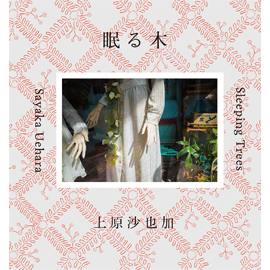
|
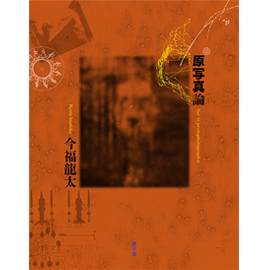
|
|
|---|
|
東松照明
『新編 太陽の鉛筆』 (Out of Stock) |
|
|
|---|

